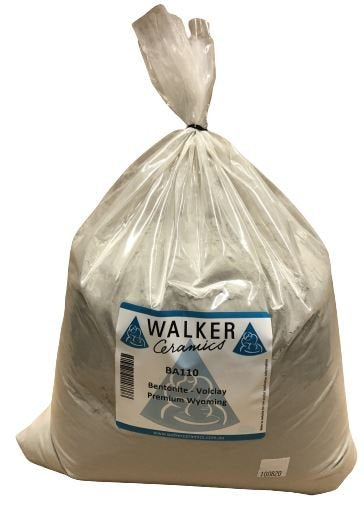Bentonite
Bentonite
Couldn't load pickup availability
Share
Bentonite is a type of clay that is commonly used in pottery and ceramics due to its unique properties. Here are some key aspects of bentonite and its role in pottery:
Plasticity - Bentonite is valued for its exceptional plasticity, similar to ball clay. It provides a high level of workability and can improve the plasticity of clay bodies. This makes it easier for potters to shape and mold their creations.
Thixotropy - Bentonite exhibits thixotropic behavior, meaning it becomes more fluid when agitated or worked and returns to a more solid state when left undisturbed. This property is beneficial in preventing sagging or slumping during the forming process.
Suspension - Bentonite is often added to glazes and slips to improve suspension. It helps prevent settling of heavier particles, ensuring a more consistent application and appearance.
Binder in Ceramic Bodies - Bentonite acts as a binder in ceramic bodies, improving the coherence and strength of the unfired clay. It contributes to the overall structural integrity of the piece during drying and firing.
Absorption Properties - Bentonite has high water absorption capabilities. It helps control the water content in clay bodies, reducing cracking and promoting even drying.
Firing Range -Bentonite is versatile and can be used across a range of firing temperatures, making it suitable for both low-fire and high-fire ceramics.
When using bentonite in pottery, it's important to experiment with the quantity added to achieve the desired effects. Too much bentonite can make the clay overly sticky, affecting workability, while too little may not provide the desired improvements. As with any ceramic material, testing and adjusting based on your specific needs and preferences are key.


